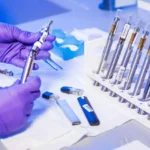What Does Engine Power Reduced Mean?

In the realm of modern automobiles, encountering the message “Engine Power Reduced” can be a cause for concern for many drivers. This warning, often displayed on the dashboard of vehicles equipped with electronic engine management systems, indicates a significant issue that requires attention. In this article, we’ll delve into what “Engine Power Reduced” means, explore its potential causes, and discuss possible solutions to rectify the issue.
Understanding “Engine Power Reduced”
“Engine Power Reduced” is a diagnostic message that appears when the vehicle’s engine control module (ECM) detects a fault or malfunction that could compromise the engine’s performance or safety. When this message appears, the ECM takes action to limit engine power output as a protective measure. This limitation is intended to prevent further damage to the engine or its components and ensure the safety of the vehicle and its occupants.
Potential Causes
- Faulty Sensors: Many modern vehicles are equipped with various sensors that monitor critical engine parameters such as air intake, fuel delivery, exhaust emissions, and engine temperature. If any of these sensors malfunction or provide inaccurate readings, the ECM may trigger the “Engine Power Reduced” message as a precautionary measure.
- Throttle Control Issues: Problems with the throttle control system, including issues with the throttle body, throttle position sensor, or electronic throttle control module, can result in reduced engine power. These components play a crucial role in regulating the amount of air and fuel entering the engine, and any malfunction can disrupt this process.
- Fuel System Problems: Issues within the fuel system, such as a clogged fuel filter, failing fuel pump, or fuel pressure regulator malfunction, can lead to insufficient fuel delivery to the engine. This can cause a drop in engine performance and trigger the “Engine Power Reduced” message.
- Engine Mechanical Problems: Internal engine issues, such as a misfiring cylinder, worn-out piston rings, or a malfunctioning valve train, can result in reduced engine power. These mechanical problems can lead to inefficient combustion and a decrease in overall engine performance.
- Electrical System Faults: Problems within the vehicle’s electrical system, such as faulty wiring, corroded connectors, or a failing alternator, can disrupt the proper functioning of various engine control components. These issues can trigger the “Engine Power Reduced” message and affect overall vehicle performance.
- Software Glitches: In some cases, software glitches or programming errors within the ECM or other control modules can lead to erroneous readings or improper engine management. These glitches may trigger the “Engine Power Reduced” message even when there is no actual issue with the engine or its components.
Solutions
- Diagnostic Scan: The first step in resolving the “Engine Power Reduced” issue is to perform a comprehensive diagnostic scan using a professional automotive diagnostic tool. This scan will retrieve fault codes stored in the vehicle’s ECM, providing valuable insight into the underlying cause of the problem.
- Inspect Sensors and Wiring: Check all relevant sensors and wiring harnesses for signs of damage, corrosion, or loose connections. Replace any faulty sensors or repair damaged wiring to restore proper functionality.
- Throttle Body Cleaning: If throttle control issues are suspected, cleaning the throttle body and throttle position sensor can often resolve the problem. Remove any carbon buildup or debris from the throttle body using a suitable cleaning solution and a soft brush.
- Fuel System Inspection: Inspect the fuel system components, including the fuel filter, fuel pump, and fuel pressure regulator, for any signs of damage or wear. Replace any faulty components and ensure proper fuel flow and pressure to the engine.
- Engine Mechanical Inspection: If mechanical problems are suspected, perform a thorough inspection of the engine’s internal components. This may involve conducting a compression test, inspecting the ignition system, and checking for any signs of wear or damage.
- Software Updates: Ensure that the vehicle’s ECM and other control modules are up-to-date with the latest software updates and recalibrations. Updating the software can often resolve software-related glitches and improve engine performance.
- Professional Repair: If DIY troubleshooting and repairs are unsuccessful, it may be necessary to seek assistance from a qualified automotive technician or dealership. A professional diagnosis and repair service can help identify and address complex issues that require specialized tools and expertise.
Conclusion
Encountering the “Engine Power Reduced” message on your vehicle’s dashboard can be unsettling, but it serves as an important warning sign of underlying issues that require attention. By understanding the potential causes of this message and following appropriate diagnostic and repair procedures, you can effectively address the problem and restore your vehicle’s performance and reliability. Remember, timely maintenance and proactive troubleshooting are key to ensuring the long-term health and functionality of your vehicle’s engine system.










